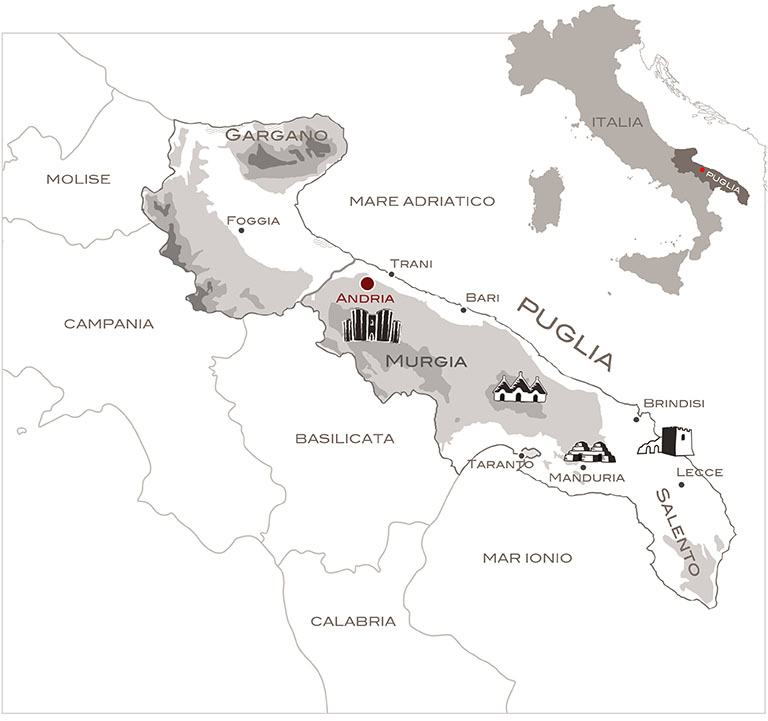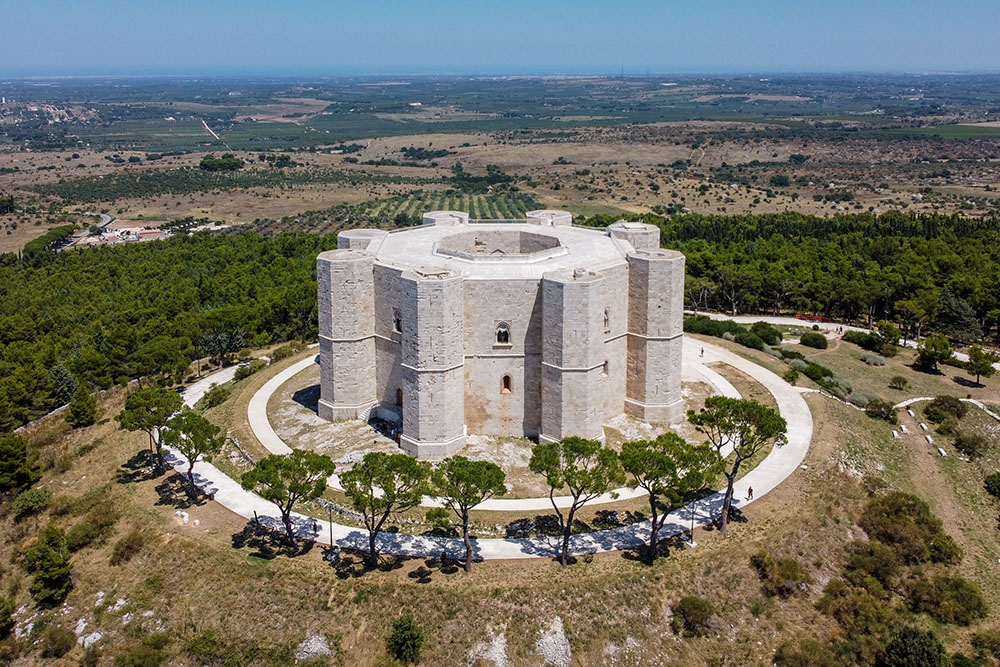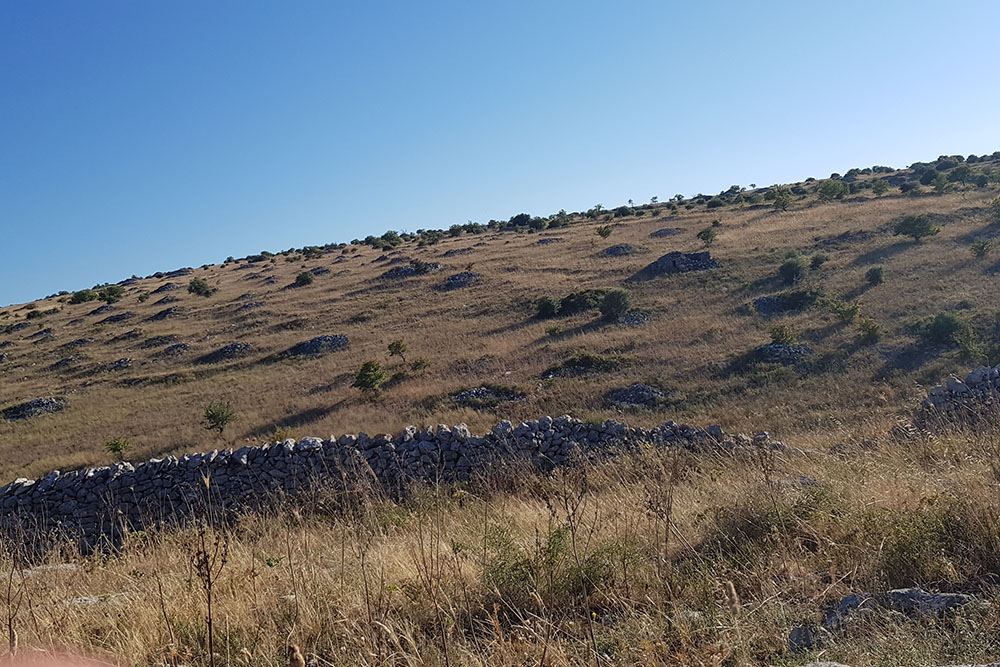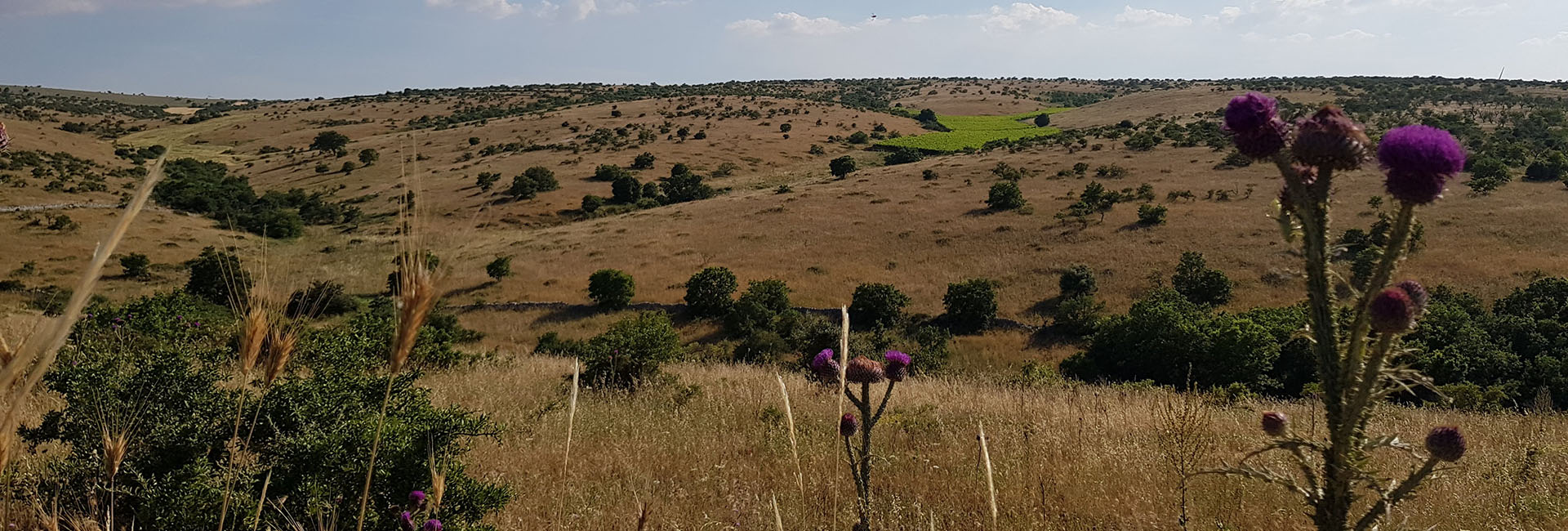
La DOC e DOCG Castel del Monte
Castel del Monte is the ideal symbol to identify one of the most wine-producing areas in Apulia, which became DOC in 1971 and DOCG in 2011. The area includes the hills of the Alta Murgia and the pre-Murgian plateau with a significant difference in landscape and soil types. Above an altitude of 300 metres, reign two limestone rocks with karst formations, while on the plateau between 180 and 250 metres, the soils are tufaceous-limestone of marine sedimentation loose and deep. In these lands with a Mediterranean climate, characterised by cool and rainy winters and hot and dry summers tempered by sea breezes, the indigenous varieties that grow are:
white grapes:
- Pampanuto
- Bombino Bianco
- Fiano
- Royal Muscat
black grapes:
- Bombino Nero
- Nero di Troia
- Montepulciano
- Aglianico
these have been joined, thanks to experimentation by Rivera’s agronomists, by international white varieties – Chardonnay and Sauvignon – which have also become part of the Castel del Monte D.O.C. specification.

Castel del Monte
The lonely and fascinating Castel del Monte dominates from one of the highest hills of the Alta Murgia a wide panorama stretching from the Tavoliere to the Gargano and Monte Vulture. It was built by Emperor Frederick II of Swabia in 1240 and since then it has been a splendid example of precision architecture, at the same time symbolic and spiritual, whose mystery and allure continues to fascinate experts all over the world. The perfect geometry of the construction shows, alongside the repetition of the octagon motif, proportions and measurements marked by astrological and esoteric references. It is clear that it was not designed to defend a territory, but was wanted by the emperor to celebrate himself and his temporal power through a typical symbolism of the Middle Ages.

The Murgia
The name Murgia derives from the Latin word ‘murex’, meaning spiky rock, and well identifies the characteristics of the rocky limestone hills that make it up, particularly in its northern part indicated as Alta Murgia. It is a dry and barren territory without boundaries or interruptions, but with the mysterious Castel del Monte standing as a sentinel and landmark. In this difficult environment, the persistent work of man has been able to patiently align the stones in the muretti a secco (dry-stone walls), trulli and jazzi, and to allow the cultivation of olives, vines and almonds among the oak woods and pastures where transhumance takes place, contributing to the creation of a humanised landscape, but where it is clear that it is nature that dominates.

